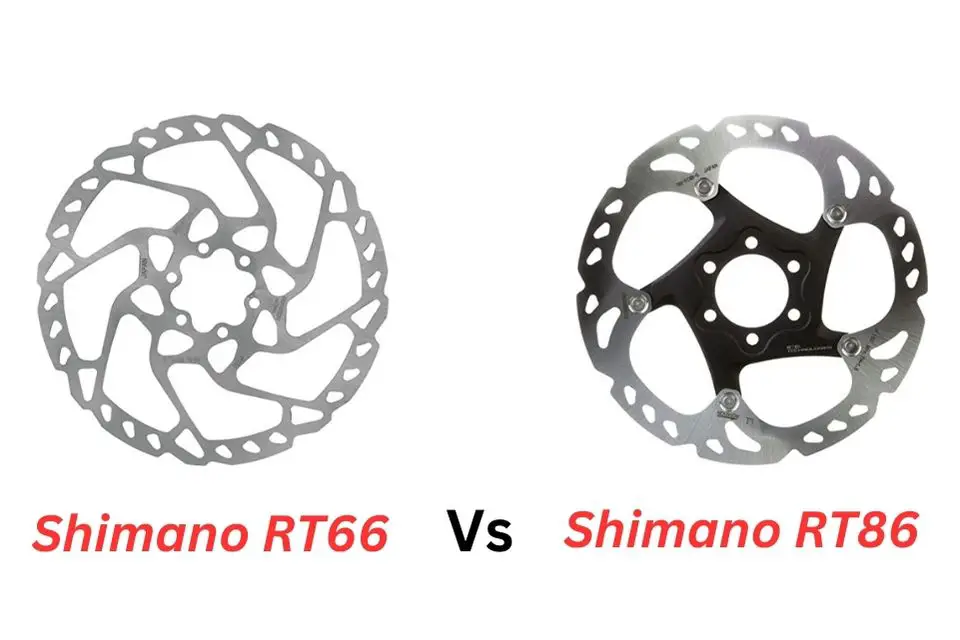
When it comes to bike braking systems, disc brakes have become increasingly popular due to their superior stopping power and consistent performance in various weather conditions. A crucial component of disc brakes is the rotor, which plays a significant role in facilitating effective braking.
What are Disc Brake Rotors?
Disc brake rotors are circular metal discs attached to the wheel hub of a bike. When the brake lever is engaged, brake pads on either side of the rotor clamp down, creating friction and causing the bike to slow down or come to a complete stop. The rotor’s design, material composition, and size greatly influence the braking performance and overall riding experience.
Disc brake rotors are available in various sizes, typically ranging from 140mm to 203mm in diameter. The size you choose depends on factors such as the type of riding you do, the terrain you encounter, and your personal preferences.
Importance of Selecting the Right Rotor
Choosing the right rotor is crucial to ensure optimal braking performance on your bike. The rotor’s performance can affect factors such as braking power, modulation, heat dissipation, and durability. It is essential to consider these factors when selecting a disc brake rotor to match your riding style and the demands of your riding conditions.
By selecting the appropriate rotor, you can achieve better control and confidence while riding, especially during technical descents, high-speed sections, or wet and muddy trails. Additionally, the right rotor choice can enhance safety by providing consistent and reliable stopping power.
Moreover, different rotor designs and features are available in the market, catering to specific needs and preferences. Understanding the key characteristics of rotors will enable you to make an informed decision that aligns with your riding style, bike setup, and performance goals.
As we explore the comparison between Shimano RT66 and RT86 disc brake rotors, we will dive deeper into their features, performance, and the factors you should consider when selecting the ideal rotor for your bike.
Read Also: Magura MT7 vs. Hope V4: Compared
Comparison: RT66 vs. RT86
Here we will compare the Shimano RT66 and RT86 disc brake rotors, highlighting their key differences in performance, weight, durability, rotor design, and compatibility.
Performance
Braking power and Modulation
Both the RT66 and RT86 rotors deliver reliable braking power, allowing riders to confidently control their speed and navigate challenging terrain. However, the RT86 is known for providing slightly stronger braking performance due to its Ice-Tech technology, which incorporates a stainless steel/aluminum sandwich structure. This design enhances heat dissipation and improves overall braking consistency, particularly during long descents or extended periods of heavy braking.
Heat Dissipation and Fade Resistance
Heat dissipation is crucial for maintaining consistent braking performance and preventing brake fade, especially in demanding riding conditions. The RT86 rotor, with its Ice-Tech technology and integrated cooling fins, exhibits superior heat dissipation properties compared to the RT66. The cooling fins facilitate better airflow and heat dispersion, reducing the risk of overheating and brake fade, which can occur during prolonged and intense braking.
Weight comparison
When it comes to weight, the RT86 rotor is slightly heavier than the RT66 due to its additional cooling fins and the stainless steel/aluminum construction. While the weight difference may not be significant, weight-conscious riders or those aiming for a lightweight bike setup may lean towards the RT66 rotor, which offers a slightly lighter option.
Durability and Long-term Performance
Both the RT66 and RT86 rotors are built to withstand the rigors of mountain biking and offer excellent durability. The RT66 rotor features a two-piece design with a durable stainless steel braking surface, providing reliable performance and longevity. Similarly, the RT86 rotor’s stainless steel braking surface, coupled with its aluminum core and cooling fins, ensures robustness and longevity under demanding riding conditions.
Rotor Design and Cooling Fins
The RT86 rotor incorporates Shimano’s Ice-Tech technology, featuring cooling fins integrated into the braking surface. These cooling fins aid in dissipating heat and reducing temperature buildup, enhancing overall braking performance and preventing brake fade. In contrast, the RT66 rotor follows a traditional design without cooling fins, focusing on reliable braking performance without specialized heat dissipation features.
Compatibility and Mounting Options
Both the RT66 and RT86 rotors are designed to be compatible with Shimano’s disc brake systems, ensuring easy installation and compatibility with Shimano brake calipers. However, it’s important to ensure that the rotor size and mounting standards (such as Center Lock or 6-bolt) align with your specific bike frame and brake system.
It’s worth noting that both rotors can be paired with a range of brake pad options, allowing riders to customize their braking experience according to personal preferences and riding conditions.
Read Also: Magura MT7 vs. MT8: Compared
User Feedback and Experiences
To gain further insight into the performance and reliability of Shimano RT66 and RT86 disc brake rotors, it’s valuable to consider the experiences and feedback of riders who have used these components. In this section, we’ll compile user reviews and feedback, providing real-world perspectives on the performance of RT66 and RT86 rotors.
User Reviews and Feedback on Shimano RT66
Riders who have used the Shimano RT66 rotor often commend its consistent braking performance and reliability. Many users appreciate its ability to deliver controlled and predictable braking power across various riding conditions. The RT66 rotor’s durability and resistance to wear are frequently mentioned, making it a reliable choice for both casual riders and enthusiasts.
According to users the RT66 rotor provides smooth modulation, allowing for precise speed control during technical descents and tight turns. The ease of installation and compatibility with Shimano brake systems also receive positive feedback, making it a popular choice for riders who value hassle-free setup and maintenance.
User Reviews and Feedback on Shimano RT86
Riders who have used the Shimano RT86 rotor often highlight its impressive braking power and heat management capabilities. Many users appreciate the rotor’s ability to dissipate heat effectively, minimizing the risk of brake fade during prolonged descents. The RT86 rotor’s consistent performance, even in demanding riding conditions, receives positive remarks from riders.
Users often note that the RT86 rotor provides strong and confident braking, giving them the control they need for aggressive riding. The integrated cooling fins are frequently praised for their contribution to heat dissipation, allowing riders to maintain consistent braking performance throughout their rides.
Real-World Experiences and Insights
Real-world experiences can vary depending on factors such as riding style, terrain, and weather conditions. Some riders may prioritize braking power and heat management, while others may place more emphasis on weight and ease of maintenance. It’s important to consider a range of perspectives and user feedback when evaluating the performance of RT66 and RT86 rotors.
While user experiences may differ, it is evident that both the RT66 and RT86 rotors have garnered positive feedback from riders. Their reliability, braking performance, and durability make them suitable choices for various riding disciplines and skill levels.
Read Also: Sm-Rt86 vs. Sm-Rt76 Compared
Conclusion
The comparison between Shimano RT66 and RT86 disc brake rotors reveals two excellent options for riders seeking reliable and high-performance braking systems. Both rotors offer distinct features and advantages, catering to different riding styles and preferences.
Whichever rotor you choose, both the Shimano RT66 and RT86 will undoubtedly enhance your braking performance and contribute to a safer and more enjoyable riding experience. Ensure compatibility with your bike’s brake system, select the appropriate rotor size, and consider your riding needs to make an informed decision.
